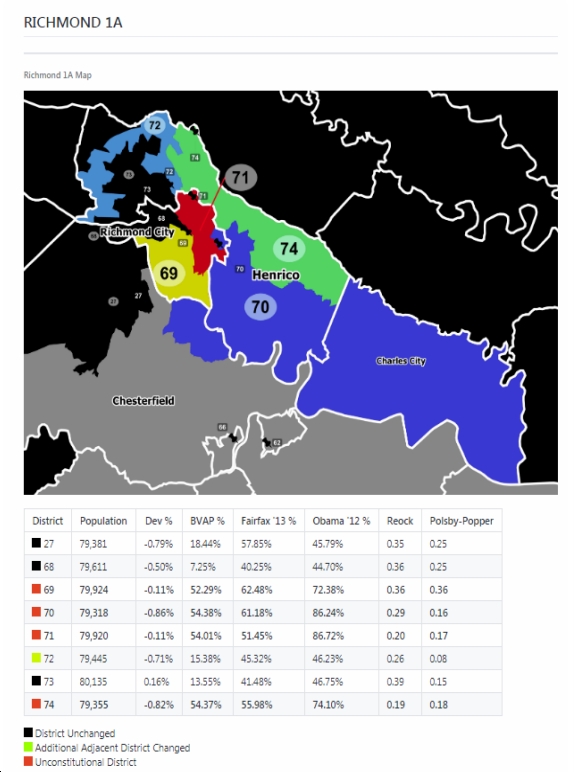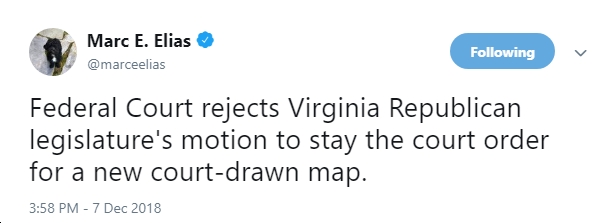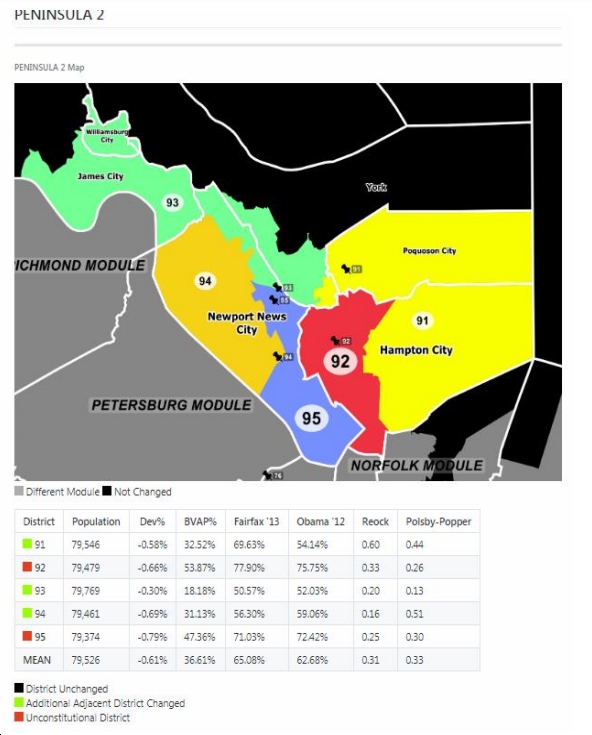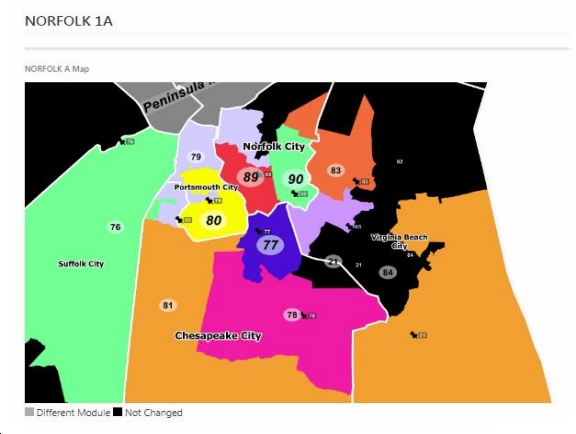 Good news (see below)…maybe we’ll get new, racially “unpacked” maps in time for the November 2019 elections after all! If so, Democrats could gain several seats in the Hampton Roads and Richmond/Henrico areas from this alone. Stay tuned!
Good news (see below)…maybe we’ll get new, racially “unpacked” maps in time for the November 2019 elections after all! If so, Democrats could gain several seats in the Hampton Roads and Richmond/Henrico areas from this alone. Stay tuned!

P.S. Special Master Grofman writes:
“There were eleven districts in the 2011 Enacted plan identified as unconstitutional: districts 63, 69, 70, 71, 74, 77, 80, 89, 90, 92, and 95…. The illustrative maps I propose to the Court change no more than 26 districts, and some combinations of the modularized plans would result in a change in as few as 21 districts…My goal has been to offer the Court what I view as narrowly tailored illustrative constitutional remedies that are not drawn using race as a preponderant criterion, but in which the African-American community continues to have a realistic equal opportunity to elect candidates of choice in the eleven unconstitutional districts, while also maintaining such an opportunity for the African-American community in district 75…
… The plans I drew do not use race as a predominant criterion. As suggested by the Abrams decision and many other court cases, a key element of a court adopted plan is that it should be drawn using traditional redistricting criteria. My illustrative remedial maps are each based on the traditional districting criteria identified in U.S. Supreme Court cases and/or the Virginia State Constitution…
Insofar as districts in my illustrative maps are redrawn with substantial African American populations, it is because following county boundaries to the extent feasible, when taken in conjunction with the existence of concentrated minority populations in various areas of the state, generated such racial proportions…
The plans are also drawn in a fashion that is blind with respect to partisan outcomes…
In sum, the illustrative plans/maps in modularized form I have created to offer for review by the Court are intended to offer possible versions of the eleven unconstitutional districts that, in my view, remedy the constitutional violation identified in the majority opinion in Golden Bethune-Hill v. Virginia in a narrowly tailored fashion by following traditional districting criteria in each of the four geographic areas of the state I have identified, while still avoiding the pairing of any incumbents…
Between December 7, 2018 and December 14, 2018, and in the hearing on January 10, 2019, the parties will have a full opportunity to present to the Court their comments on the illustrative maps I provide to the Court, and offer suggestions for ways in which they should be redrawn. If any of the suggestions received pursuant to the December 14 deadline lead me to recommend to the Court a specific reconfiguration of any of the modules, I will inform the Court of that recommendation on or before December 28, and that information will be shared with the parties.
Since I am providing the Court with illustrative options for different geographic areas of the state, I expect that the Court will provide me instructions about the shape of the remedial plan in the four geographic areas of the state where
the unconstitutionality exists not long after the Court hearing of January 10, as well as any more detailed instructions about any additional reconfigurations that it wishes to see implemented. With the assistance of legislative staff, I should be able to conduct any needed further map drawing soon after being given these instructions, so that a court-ordered map can be put into place in a timely fashion. “















![Video: Sen. Tim Kaine on “Meet the Press” Says DoJ Not Complying with the Law on Release of ALL the Epstein Files, But Argues “I think [impeachment/contempt for DoJ officials is] premature”](https://bluevirginia.us/wp-content/uploads/2025/12/kainemtp1221-100x75.jpg)

![Video: Rep. James Walkinshaw (D-VA11) Says “It’s enormously frustrating,” as “the law is clear…the full files were supposed to be released [yesterday] and the Trump administration is not in compliance with that law”](https://bluevirginia.us/wp-content/uploads/2025/12/walk1219-100x75.jpg)